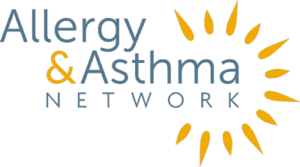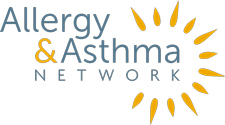 Most people know that smoking is dangerous. In the past 50 years, the U.S. has seen a 50% decline in smoking. That has saved an estimated 8 million lives and almost a million deaths from lung cancer. It sounds like we’re doing well, especially if you don’t smoke. Unfortunately, secondhand smoke puts nonsmokers, including children, at risk.
Most people know that smoking is dangerous. In the past 50 years, the U.S. has seen a 50% decline in smoking. That has saved an estimated 8 million lives and almost a million deaths from lung cancer. It sounds like we’re doing well, especially if you don’t smoke. Unfortunately, secondhand smoke puts nonsmokers, including children, at risk.
Secondhand smoke is defined as the combination of smoke from burning cigarettes and the smoke breathed out by smokers.
Secondhand smoke has more than 7,000 chemicals. Of those chemicals, hundreds are toxic, and 70 may cause cancer. This poses a risk for everyone, but people with allergies and asthma will suffer more. Inhaling secondhand smoke inflames the airways and weakens respiratory function. This can aggravate symptoms and trigger asthma attacks.
Some of the toxic components of secondhand smoke include:
- Ammonia
- Benzene
- Cadmium
- Cyanide
- Formaldehyde
These chemicals are dangerous to breathe in and they coat surfaces where people smoke. They also settle into house dust for all to inhale.
Banning smoking in your home or car is a good start, but more education is needed about the dangers of secondhand smoke. Human health depends on smoke-free laws in public spaces and housing units.
What are the effects of secondhand smoke?
Children, the elderly, and people with asthma are significantly affected by secondhand smoke. Inhaling tobacco smoke weakens the hair-like cilia in the lungs. Cilia act to rid your airways of mucus and other particles.
Secondhand smoke also encourages mucus production and irritates your airways. If you have asthma or allergies, this can mean worsening symptoms and a more challenging time breathing. The U.S. Centers for Disease Control and Prevention (CDC) estimates that since 1964, 2.5 million people have died due to secondhand smoke exposure.
Many U.S. cities have laws banning smoking in workplaces, restaurants, and public areas. Smoke-free laws are a good start towards protecting people but are far from enough. There are steps you can take to safeguard your family from this health hazard.
What are the dangers of secondhand smoke?
All exposure to secondhand smoke is dangerous. Breathing tobacco smoke increases the risk of developing heart disease. Smoke damages blood vessels and makes platelets stickier. This may interrupt the heart’s rhythm, form aneurysms or blood clots, or cause a stroke. Those with diagnosed heart problems need to be vigilant about secondhand smoke.
Even if you don’t smoke, secondhand smoke can cause lung cancer. Tobacco smoke carries carcinogenic chemicals, and even limited contact can leave cells vulnerable. They can suffer toxic damage that turns them from healthy cells to cancer cells. We know that heavy smokers have more risk of lung cancer. Secondhand smoke exposure works the same way: the more you breathe, the higher your risk.
Think about it another way. Imagine sitting behind a truck with a diesel engine, breathing in black smoke. Tobacco smoke has similar toxins to those that a diesel engine spews out. If you would never sit behind that truck, think of secondhand smoke in the same way. Realize that any exposure to secondhand smoke is risky. Avoiding it altogether is the best way to safeguard your health.
Children, the elderly, and people with health issues are at most risk from secondhand smoke. People living in apartments can’t avoid secondhand smoke from neighbors. Cracks in walls, spaces under doors and ventilation systems allow it to travel freely.
A study of children from nonsmoking families found that kids living in apartments had 45% more metabolized nicotine in their blood. This shows that children living in multi-unit homes face health risks due to secondhand smoke exposure. Secondhand smoke affects impoverished communities and people of color with more frequency.
Asthma and secondhand smoke
The first thing people often ask is: Can secondhand smoke cause asthma? The short answer is sometimes. Secondhand smoke is a leading cause of asthma in children. Parents then worry about life-threatening attacks, hospitalizations, and the need for quick-relief medication.
Researchers discovered a direct relationship between smoking bans and children with asthma. States with smoking bans in public places had fewer kids who needed emergency care. Over three years, the need for emergency asthma care for children in those states went down by 17%.
Healthy adults may not develop asthma from secondhand smoke, but exposure brings risks. Adults with asthma may experience symptoms ranging from coughing, wheezing and breathing difficulties to uncontrollable asthma attacks.
Tobacco smoke has many effects on those breathing it, including:
- Inflammation of the airways, causing them to narrow
- Increased mucus production
- Damage to cilia, allowing mucus to clog airways and worsen symptoms
- Decreased lung function
- Severe symptoms, which may trigger asthma attacks
What about allergies and secondhand smoke?
People with allergies may also suffer from the effects of secondhand smoke. Allergies occur when your immune system overreacts to something that others find harmless. Common triggers include pollen, dust mites, mold and pet dander. Exposure to these allergens can lead to coughing, sneezing, watery eyes and sinus problems.
Many people with chronic sinus infections or sinusitis report they often have contact with smokers. A study found that exposure to secondhand smoke contributes to as many as 40% of the 30 million cases of chronic sinusitis every year among U.S. adults.
There may also be a link between secondhand smoke and food allergies in children. Swedish researchers followed 3,800 children from birth to age 16. The conclusions were startling. When babies had contact with smokers, they often developed allergies to eggs and peanuts. Children in nonsmoking homes had fewer allergies. The research is not complete but it suggests a link between food allergies and smoke exposure.
What are the effects of secondhand smoke on babies?
The risk of stillbirth or neonatal death (when a baby dies within four weeks of birth) increases for women that smoke during pregnancy. Smokers also risk heart defects and cleft palate in their newborns. Exposure to secondhand smoke can cause reduced birth weight and congenital malformations.
Infant development continues after birth. Developing brains and bodies are at higher risk from secondhand smoke exposure. Risks include:
- Developmental delays
- Higher incidence of dying from Sudden Infant Death Syndrome (SIDS)
- Weaker and less developed lungs
- Frequent bouts of bronchitis and pneumonia in the first year of life
- Increased numbers of ear infections and colds
- Higher rates and severity of asthma as children
- Possible links to childhood cancers and brain tumors
- Plaque forming on arteries, increasing the risk for heart disease as adults
How does secondhand smoke affect children?
Young children may seem less vulnerable than infants but their bodies are still developing. Like babies, they can’t control their surroundings. Secondhand smoke brings increased incidence of:
- Lung infections such as pneumonia and bronchitis
- Ear infections
- Colds and other respiratory illnesses
- Shortness of breath and wheezing
- Decreased lung function
- Sinusitis
For children with asthma, secondhand smoke can trigger an attack. Getting sick more often can worsen symptoms and make asthma harder to control.
Avoiding secondhand smoke is crucial to the health of all children.
Is secondhand smoke worse than smoking?
Smoking and secondhand smoke are both dangerous. Smoking is terrible for your health, but secondhand smoke also has consequences. Nonsmokers inhale twice the amount of nicotine and tar as smokers do and up to five times more carbon monoxide. These chemicals increase the risk of disease and attack your heart. Over time, these effects can occur from minor amounts of exposure.
Complete avoidance of secondhand smoke is the safest choice for everyone.
How to avoid secondhand smoke?
Avoiding secondhand smoke should be everyone’s goal. If you or someone you love smokes, make quitting a priority (or take steps to help your loved one quit). Quitting is hard, but coaching, smartphone apps, and cessation medicine can help. Talk to your doctor for more advice.
There are many ways to avoid contact with secondhand smoke, including:
- Don’t allow smoking in or close to your home. Fans, open windows and air purifiers will not stop the risks.
- If you live in an apartment that allows smoking, know your rights. Consider speaking to neighbors and building management about the dangers of secondhand smoke. The American Nonsmokers Rights Foundation has resources to help.
- Don’t allow smoking inside your vehicle, even with the windows down.
- Don’t allow babysitters or family members to smoke around your kids.
- If your child attends daycare, make sure smoking on the premises isn’t allowed.
- Patronize smoke-free restaurants, hotels, and public spaces. Be aware that “No Smoking” sections are not enough to separate you from smokers.
- If your workplace allows smoking, talk to your employer about why smoke-free is best.
- Avoid vaping and e-cigarettes as well as tobacco smoking. They are not harmless, containing cancer-causing chemicals and heavy metals.
What are the long-term effects of secondhand smoke?
Secondhand smoke can cause cancer, heart disease, strokes and chronic lung disease. It can cause asthma in children. It can exacerbate symptoms or trigger attacks in those who already live with it. Your heart and lungs have to work harder. It increases the chances of breathing problems.
The CDC warns that any exposure to secondhand smoke is harmful. Your health can suffer if you are around smokers for as little as 10 minutes a day.
What states ban secondhand smoke in cars?
The CDC issued a statement in 2006 citing evidence that motor vehicles can be a significant source of secondhand smoke exposure for children.
“Children can be regularly exposed to secondhand smoke when parents or other adults smoke in these vehicles while they are present,” CDC says. “The concentrations of secondhand smoke in vehicles where smoking is occurring can reach very high levels. Making vehicles smoke-free would be expected to reduce children’s secondhand smoke exposure.”
Smoking in a vehicle with the windows open may reduce the amount of secondhand smoke exposure in the car, but levels are still high enough to be considered unhealthy for children.
The following states have enacted laws banning smoking in workplace and personal motor vehicles with a child present (as of September 2020):
- Maine
- Vermont
- Virginia
- Illinois
- Arkansas
- Louisiana
- Utah
- California
- Oregon
States with bans on smoking in workplace motor vehicles only include (as of September 2020):
- New Mexico
- Colorado
- North Dakota
- Nebraska
- Oklahoma
- Minnesota
- Iowa
- Indiana
- Ohio
- Tennessee
- North Carolina
- Pennsylvania
- Maryland
- Delaware
- New York
- Massachusetts
- Rhode Island

 810304 Eaton Place, Suite 100
810304 Eaton Place, Suite 100